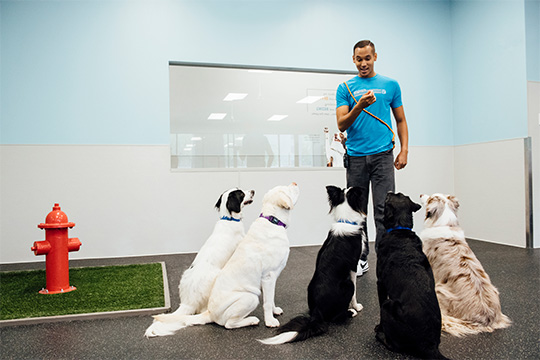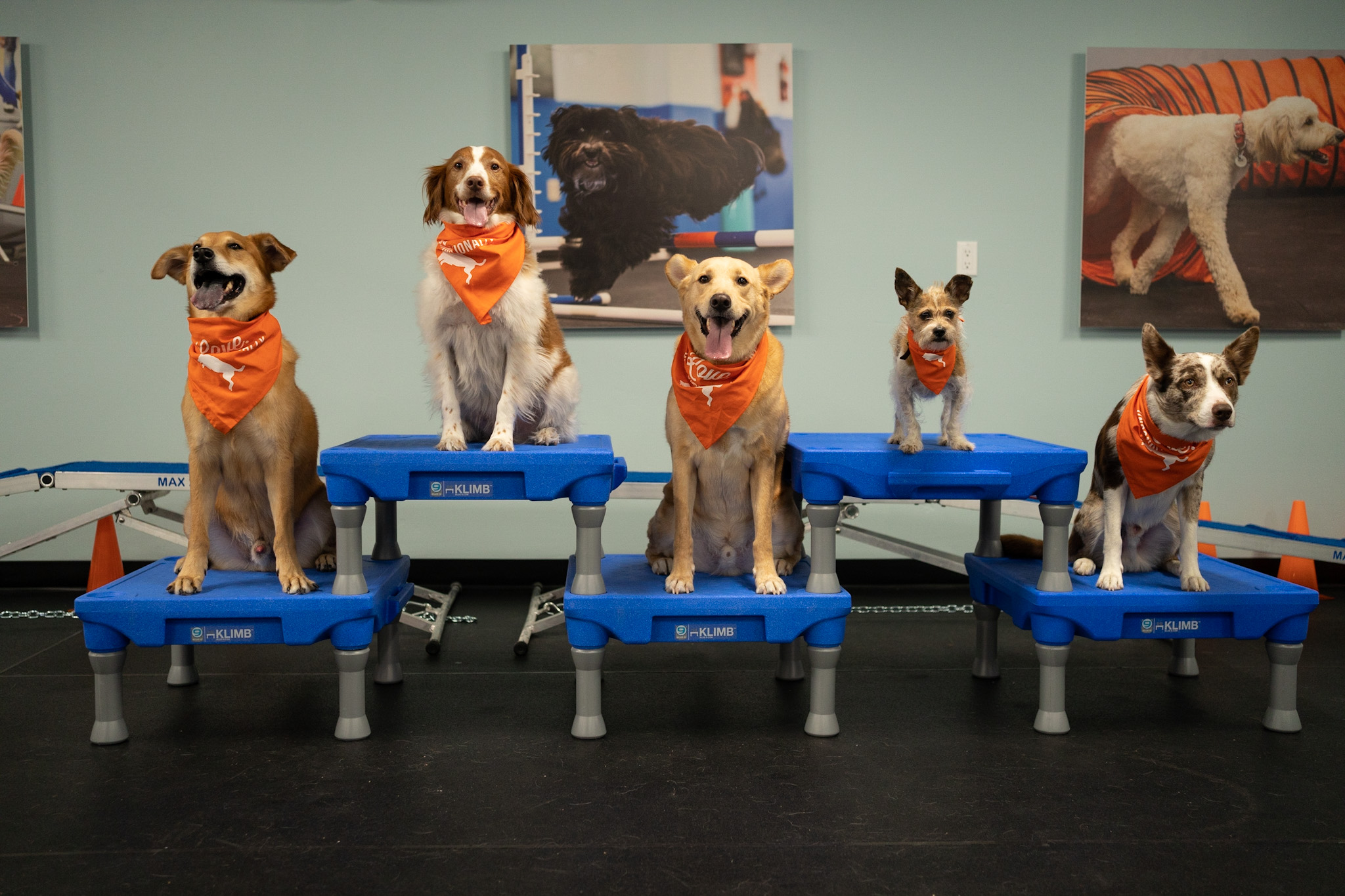Why Consistency is Key in Dog Training for Long-Term Success
Why Consistency is Key in Dog Training for Long-Term Success
Blog Article
Transform Your Pet dog's Habits With Proven Training Techniques
Changing your pet's habits requires a nuanced understanding of their private qualities and demands, as well as the application of tested training approaches. Uniformity in your training approach not just boosts obedience yet likewise fosters a much deeper bond of trust and regard between you and your family pet.
Recognizing Pet Dog Behavior
Understanding pet dog behavior is crucial for reliable training and interaction between humans and their canine buddies. Canines, as social pets, exhibit a series of habits affected by genes, atmosphere, and experiences - Dog training. Identifying these actions assists proprietors customize their training approaches to fulfill the specific requirements of their pets
Key elements of canine actions consist of body movement, articulations, and social communications. For example, a wagging tail typically shows excitement, while a reduced head might signal submission or concern. Recognizing these signals can aid owners translate their pet dog's psychological state and respond properly. In addition, socializing plays an important function fit behavior; canines that interact positively with other pets and numerous individuals are generally much more well-adjusted and adaptable.
Moreover, recognizing tension signals-- such as evasion, pacing, or panting actions-- can protect against rise right into much more major concerns. Proprietors that are in harmony with their pet dog's habits can produce a caring and safe environment, cultivating trust fund and boosting the training process. Inevitably, a deep understanding of canine actions lays the structure for a harmonious relationship and reliable training end results, making sure both canines and their owners thrive with each other.
Positive Reinforcement Strategies
Positive reinforcement strategies are commonly recognized as one of one of the most efficient approaches for training pet dogs, promoting a favorable knowing setting. This method involves gratifying desired habits with deals with, appreciation, or play, therefore motivating the pet to duplicate those habits. Unlike vindictive methods, positive support builds trust fund and reinforces the bond in between the canine and the fitness instructor.
Rewards should be given immediately following the desired behavior to help the dog make the link. Uniformity is likewise essential; using the same commands and incentives assists the canine understand what is anticipated.
It is very important to note that positive reinforcement is not concerning bribery; rather, it is regarding strengthening etiquette. Over time, as the pet discovers to associate details activities with favorable outcomes, the regularity of incentives can be gradually minimized, transitioning to spoken praise or intermittent benefits. This method not only encourages obedience however also advertises a pleased and certain pet dog, making training a much more pleasurable experience for both parties entailed.
Addressing Usual Issues
Attending to common issues throughout pet dog training is necessary for making sure a unified and effective relationship between the pet and its owner. Several pet owners encounter behavior difficulties, such as excessive barking, jumping, and leash pulling. Understanding the origin of these actions is essential for efficient training.
To mitigate this, offer ample physical workout, psychological excitement, and possibilities for social communication with both human beings and various other pets. Training the dog to rest upon welcoming can redirect this habits favorably.
Chain pulling is one more common problem, frequently arising from a dog's enthusiasm to discover. Making use of appropriate leash taking care of strategies, incorporated with training methods that motivate loose-leash strolling, can dramatically boost this habits.
In enhancement, issues like source securing or splitting up stress and anxiety need customized methods. Progressive desensitization and counter-conditioning can be reliable in resolving pop over to these guys these difficulties. By acknowledging and proactively handling these common issues, canine proprietors can promote a more delightful training experience and reinforce the bond with their canine friends.
Uniformity in Training

To achieve uniformity, it is essential that all participants of the family stick to the same training techniques. Using the exact same verbal hints and hand signals makes sure that the dog gets uniform messages. Furthermore, the timing of incentives and corrections must correspond; prompt support raises the likelihood that the canine will connect the habits with the result.
Regular method sessions, combined with structured routines for feeding, walking, and playtime, assistance canines prepare for and understand their environment, making them a lot more responsive to training. Inevitably, consistency fosters a feeling of protection and depend on, encouraging dogs to find out a lot more effectively.
Structure a Strong Bond
How can cultivating a strong bond between a dog and its owner enhance the training experience? A strong connection improved trust fund and regard acts as the structure for effective training. When a dog really feels safe and secure in its link with its proprietor, it is more probable to show positive behaviors and be receptive to finding out. This bond motivates the dog to involve fully in training sessions, as it checks out the owner as a resource of guidance and assistance.
Additionally, a strong bond facilitates far better interaction. Canines are proficient at checking out human cues, and a relying on relationship enables clearer signals throughout training. Owners that invest click here for more time in structure this bond through play, socializing, and positive support develop a setting where dogs really feel eager and inspired to learn.
Furthermore, a reputable connection can lower anxiousness and behavioral concerns, as canines are much less most likely to act out when they really feel recognized and cared for. Focusing on the growth of a strong bond not just boosts the training experience yet also adds to a better and more well-adjusted canine. Inevitably, the trip of training changes into a joint collaboration, leading to lasting behavioral enhancements.
Final Thought

Proprietors that are attuned to their pet dog's behavior can develop a nurturing and secure atmosphere, promoting trust fund and boosting the training check here process. Eventually, a deep understanding of canine habits lays the foundation for an unified relationship and efficient training results, guaranteeing both canines and their owners grow together.
Addressing usual problems during pet dog training is necessary for making sure a successful and harmonious partnership in between the dog and its owner.Uniformity is a keystone of efficient canine training, as it establishes a clear structure for the canine to understand behaviors and assumptions.In final thought, transforming a dog's behavior via shown training approaches needs an understanding of canine behavior, the application of favorable reinforcement strategies, and a focus on uniformity.
Report this page